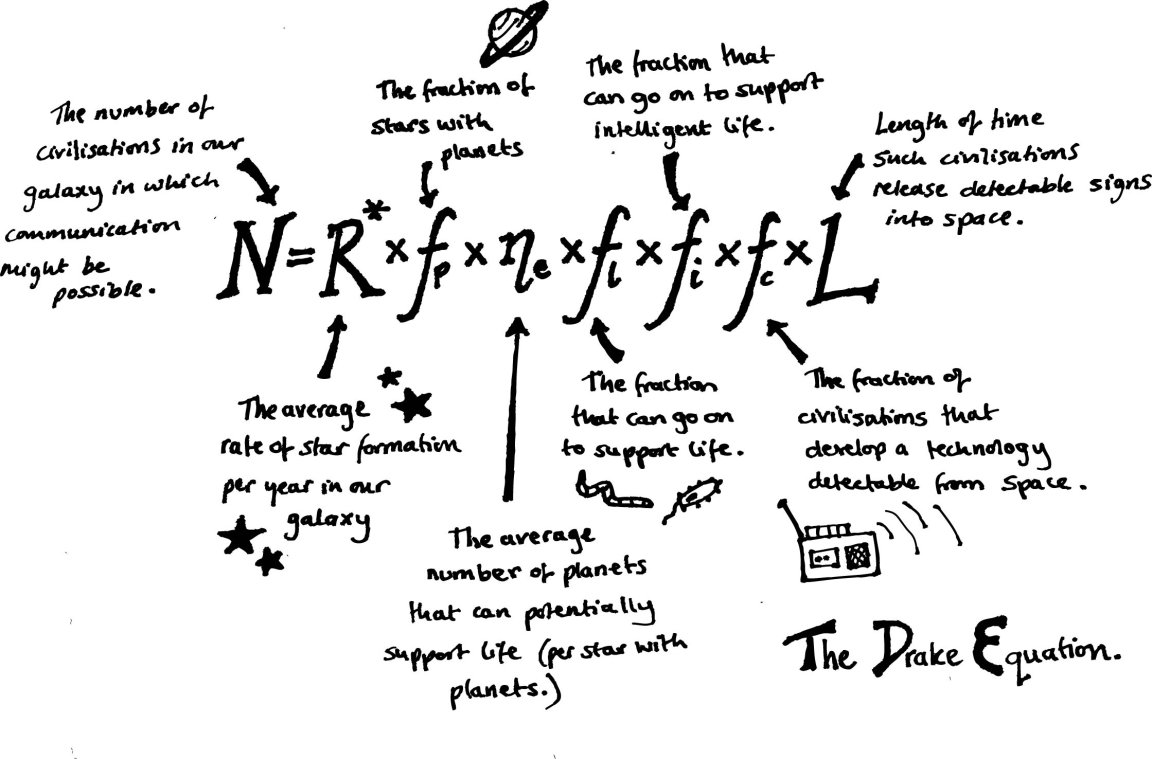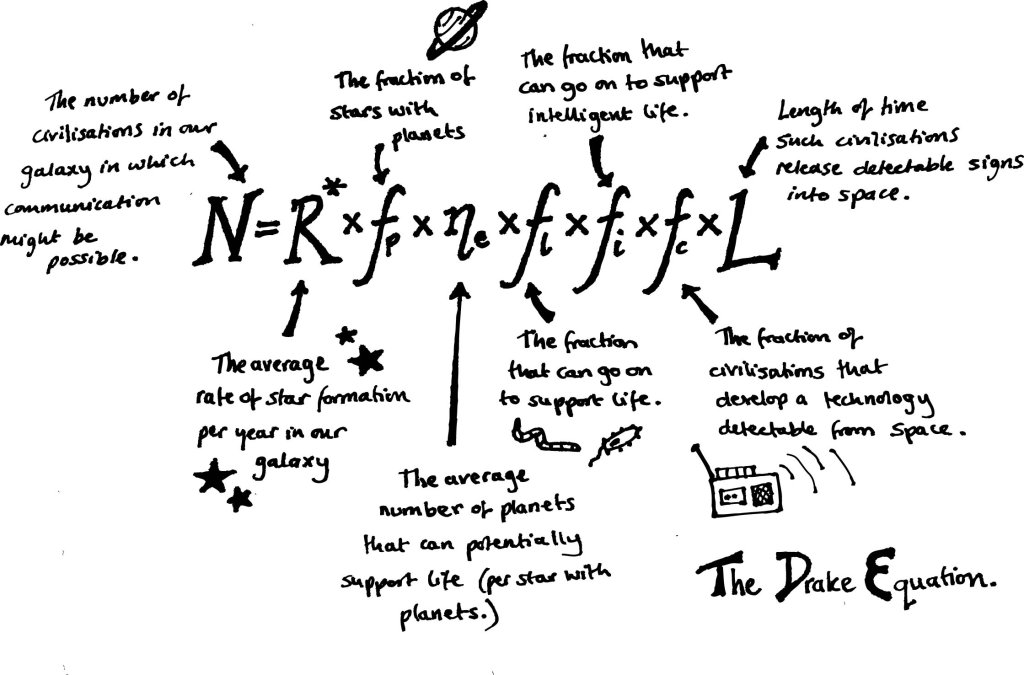
Frank Drake is best known for developing the (aptly named) Drake equation, which is a mathematical equation that was developed to estimate the number of detectable alien civilizations residing in the Milky Way. But that wasn’t until later in his life.
After graduating from Harvard with a focus on radio astronomy, he began a career in astronomical research at the National Radio Astronomy Observatory in Green Bank, West Virginia. He eventually continued on to NASA’s Jet Propulsion Laboratory and became a founding member of SETI (the Search for Extraterrestrial Intelligence). Today, SETI is still searching our skies for signs of alien life, and so Drake’s legacy lives on.
But why do we invest so much in searching for signs of life on other worlds?
Well, as it turns out, basic probability indicates that life beyond Earth is actually fairly common. Now, that doesn’t mean that we know that alien life is, in fact, out there…we just know that it makes sense to look for it. And we know this because of Drake.
Drake’s equation takes many things into consideration in order to determine how many alien civilizations likely exist. The specific parameters and assumptions can be altered to give slightly different answers, but they all point to basically the same end.

Some of Drake’s factors are: The fraction of stars that have planets, the number of habitable planets circling each star, the fraction of planets that remain habitable long enough for life to evolve, the number of civilizations that are capable of developing technology that could be matched to ours, etc..
As previously mentioned, ultimately, the number of intelligent civilizations depends largely upon which variables you put into your equation. But for those of you who want a hard number, here is a handy infographic that breaks down one possible answer.
How Many Alien Civilizations Exist?

Image credit: iid Studio